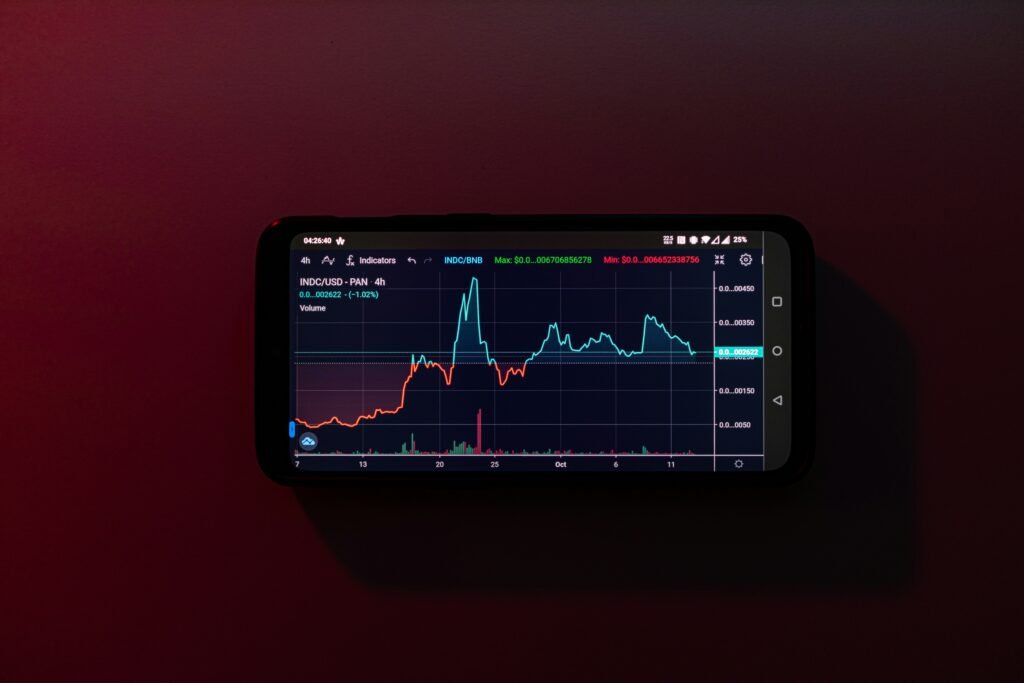From Concept to Implementation: The 5 Stages of Blockchain Integration for Enterprises

In recent years, blockchain has built a reputation for being more than just a buzzword — it is now recognized as an actual technology with the potential to alter the workings of traditional industries. But it is that transition from seeing the potential of blockchain to using it within our own business operations in which lie a lot of difficulties. The promise of transparency, security, and automation is terribly alluring, but then the following thought must set in your brain: Okay, this seems interesting… But wait a moment — how do I get from here to there?
The process for enterprises to be able to leverage a blockchain can reportedly occur over several steps, presumably easing more into the tech through various incentives. Although the process is unique to each organization, these five stages provide a rough pathway from inception to execution.
Is Your Concept Compatible with the Blockchain?
Stage 1: The toughest part is in this step to see if the blockchain applies at all points for your business. There is no panacea, and applying blockchain where it does not fit often spells messiness.
Therein lies the heart of it: where is blockchain NOT useful at all?
The inherent qualities that blockchains, such as transparency, immutability, and decentralization deliver… These make it a good contender for application in cases where you have several of the same set playing together with a question mark hanging over their ability to entirely trust one another. Whether it be disparate suppliers, contractors, or regulatory bodies — blockchain is excellent at keeping everyone honest via a tamper-proof shared single source of truth.
Data integrity at a high level Immutability: In financial services and other areas where correct (trustable), secure, tamper-proof records are necessary in everyday business, blockchain has a huge advantage with its immutability of the record.
The aim at this phase is to establish exactly where blockchain can and cannot add tangible value based on the characteristics of the technology itself.
Phase 2: Proof of Concept (PoC) — 'Testing the Waters'
When you have found an appropriate place to apply CLT, the next step is creating a Proof of Concept (PoC). The idea behind this is not to blockchain your whole company but rather to test the water with a single implementation in one area and so establish if it works.
So, if you are a logistics company and want to optimize tracking your shipments? A PoC provides simple proof that blockchain is capable of recording the movement or events on this one journey down its supply chain. How to Test Whether Blockchain Can:
- Increases visibility
- Decreases miscommunication-related hiccups and potential lag times
- Auto full processes (i.e. payment release on goods delivery)
This is not a full-scale rollout stage. Instead, you are assessing blockchain’s value outside of the hyperbole in some use case for your organization. It verifies whether your blockchain will do what you are asking it to and if it is worth scaling.
Phase 3: Pilot Program (Enlarging)
If your PoC is successful, it makes sense for you to advance into a pilot program. Here is where you scale the application of blockchain from one narrow use case to a wider set of processes through your company. This is a stage of transition, which should have been applied to stress scalability and address the challenges that arise with blockchain touching more business.
For the logistics use case as an example, you could track blockchain on more routes or involve multiple stakeholders following a successful PoC. This is where you are going to start learning some caveats with scaling:
- Legacy integration: You need to understand how blockchain will jive with your salmon farm’s hitherto SQL-killer app, after all.
- Compliance and regulation: The more blockchain is ingrained in your business, you should make sure it complies with industry standards like GDPR for data privacy.
Pilots are perfect for testing scalability and adaptability which, if not done right from the start, can effectively lower your chances of making major mistakes by burying yourself into a full-blown integration.
Phase 4: Operationalizing Blockchain (Full Implementation)
The pilot is considered successful, so the full STD regime can be rolled out to all concerned. This is the stage where you intend to integrate blockchain within your business operations so that it becomes an essential aspect of how execution and monitoring processes are performed.
It is also the stage where all things happen. Implementation requires:
- Creating & customizing: For the full workload, of course, you’ll want to make sure your blockchain system (or consortium) supports an out-of-the-box deployment with necessary customizations that may suit your exact specifications.
- Team training: Having staff that can support the new workflows created by blockchain is imperative.
- Infrastructure alignment: Whether it be integrating blockchain with your ERP system or enabling data to be shared across multiple locations, ensuring that the technology stack supports the blockchain solution is key.
All too frequently, the process of full implementation also demands a shift in mindset. It takes a fair amount of buy-in across the organization to use blockchain largely because it replaces some manual processes and trusts or control mechanisms. The organizational change required to guide your company through this shift in business is just as important as the technical requirements.
Stage 5: Continuous Improvement — Making the System Better
Continuous improvement: The last stage is often forgotten but as crucial as the other two stages. And of course, simply implementing blockchain and “letting the rowers take over” (i.e., expecting your community to be good stewards) is no excuse. As with any technology, blockchain solutions require ongoing monitoring and continuous improvement to operate at their best.
The more connected with your business your blockchain solution becomes, the easier it will be to identify problems that are holding you back or areas where improvements can be made. This could involve:
- Switching the consensus mechanism to increase speed and scalability (e.g. go from Proof of Work POW to some level 2)
- Utilizing new data feeds (such as more sophisticated oracles) to improve the preciseness regarding smart contracts.
- Maximizing the UI/UX for any internally facing blockchain apps, making it more friendly to your staff.
This process also includes understanding what is current in blockchain technology. For example, newly invented zero-knowledge proofs or layer 2 scaling solutions could present further possibilities to fine-tune your blockchain procedures.
Conclusion
Bringing a full blockchain network from concept to reality is not linear or quick without design and testing iterations. The point is blockchain isn’t a magic bullet, it’s just another tool that can solve real business problems when applied correctly. But depending on where you are in your project, how do you scale it and at what point will this tech become a normal part of daily life?
This is where Vantix assists, working with enterprises through all the above stages, from idea exploration to full implementation and continuous improvement. We want to help businesses use blockchain in a way that actually creates value — not hype.
No matter if you are a newcomer to how blockchain can benefit your business or being an established firm who want to take its PoC project to a higher level, let us know at Vantix. We will make sure your blockchain solution is pragmatically implemented, scalable, and customized for solving specific challenges of the business.

